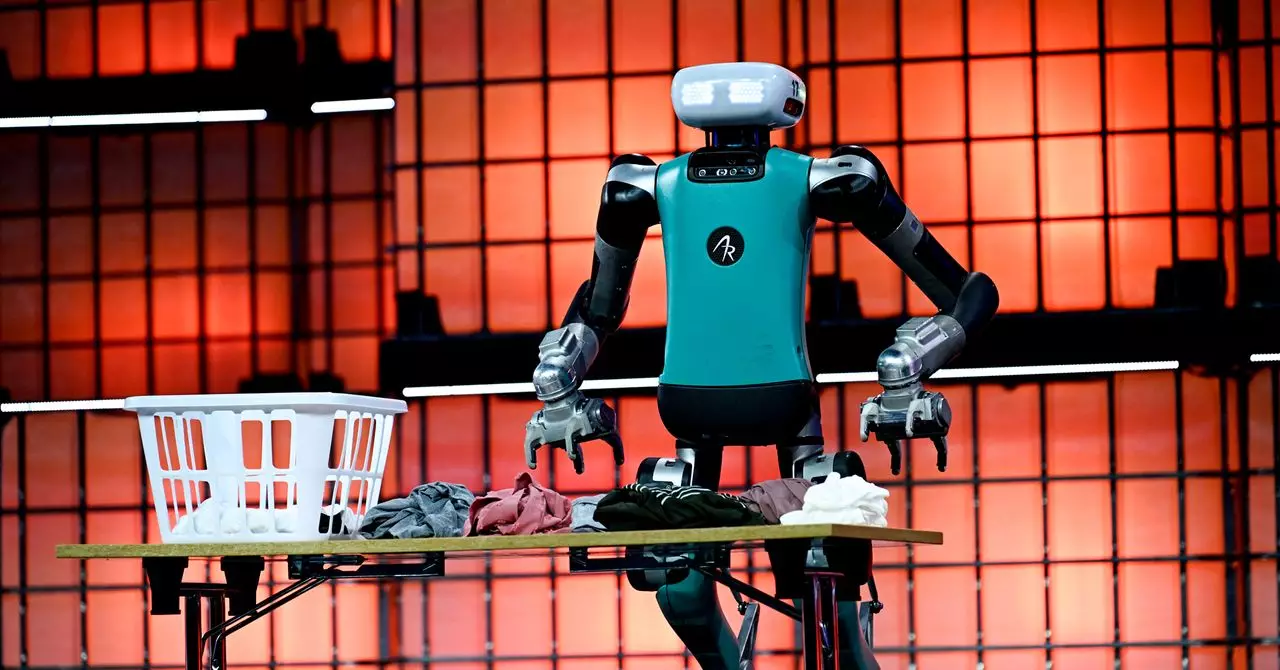In an exciting progression for robotics, Boston Dynamics is preparing to introduce its advanced humanoid robot, Atlas, into a commercial manufacturing setting at a Hyundai factory later this year. This all-electric iteration of Atlas, which has impressed audiences since its debut in 2013, signifies a seismic shift in how production could be handled in the future. Unlike its predecessors that utilized hydraulic systems, this new model aims to incorporate strength and reliability, honing in on tasks traditionally seen as labor-intensive for human workers. By engaging in activities like lifting substantial weights and carrying awkward loads, Atlas is set to push the boundaries of what robots can achieve in industrial applications.
Boston Dynamics spokesperson Kerri Neelon emphasizes the robot’s capability to manage tasks that often strain human resources. The integration of Atlas within a manufacturing environment isn’t merely about efficiency; it reflects a broader vision to enhance productivity while supporting human workforce capabilities. With Atlas entering the mainstream industrial scene, it raises critical questions about the future dynamics between human labor and automation. Will there be displacement, or could these robots serve as tools enhancing human capabilities?
Humanoid Robots on the Horizon: A Broader Trend
Looking ahead, the year 2025 is poised to mark the explosion of humanoid robots across various industries. Though we’ve seen preliminary steps from companies like Agility Robotics and Figure, which introduced robots capable of moving items within warehouses, the tide of commercial availability is rapidly approaching. The forecast from financial analysts hints at a burgeoning market for humanoid robots, with an estimated value of $38 billion by 2035. The evolution of humanoid robots represents the industry’s ambition to develop versatile machines capable of handling multiple tasks, mirroring the adaptable nature of human workers.
This paradigm shift moves away from conventional automation methods that focus on designing entire systems around fixed tasks. Jonathan Hurst, cofounder and chief robot officer at Agility Robotics, recognizes that whereas specialized automation solutions provide efficiency in high-demand scenarios, flexible robots like Atlas can transform less conventional tasks into opportunities for production gains. This adaptability could reshape how we think about the future of work and labor dynamics within industries.
Building a Human-Centric Future
Boston Dynamics holds a strong belief in creating humanoid robots that integrate seamlessly into our existing human-focused world, asserting that factories are already optimized for safe automation. This forward-thinking approach means that robots like Atlas aren’t just additional cogs in the manufacturing machine; they represent a potential evolution in how businesses can enhance workflow and employee safety. The philosophy behind Atlas is clear: we live in a human-first society and robots must be designed to complement, rather than replace, human laborers.
However, the transition to integrating humanoid robots into everyday work environments does not come without its challenges. Tesla’s much-anticipated Optimus robot faced scrutiny after a recent demonstration revealed that the showcased units were being remotely operated by humans. This casts doubt on the autonomy of such robots and raises valid concerns about their effectiveness in real-world applications. Moreover, the implications of recent restrictions on rare-earth metals by the Chinese government could stymie the production and development of these advanced robotic technologies.
Humanoid Robots: A New Frontier of Opportunity
As Boston Dynamics pushes forward with Atlas and as industry competitors unveil their own humanoid robots, it’s essential to ask how these technologies will redefine our work culture and manufacturing efficiency. The desire for more flexible, human-centric robots encapsulates the spirit of innovation that drives our technological landscape. Yet, a careful approach to deployment is needed to understand the nuanced relationship between humans and machines.
While the excitement surrounding the capabilities of humanoid robots is palpable, the challenges in their practical application cannot be understated. The balance between automation and human involvement will require thoughtful strategizing from corporations and policymakers alike. Humanoid robots have the potential to revolutionize industries, but the path forward will necessitate vigilance, adaptability, and a commitment to creating a workplace that values human contributions alongside robotic advancements. As we forge ahead into this new era, it’s crucial to remain critical and informed about the implications these innovations bring to both industry and society at large.

